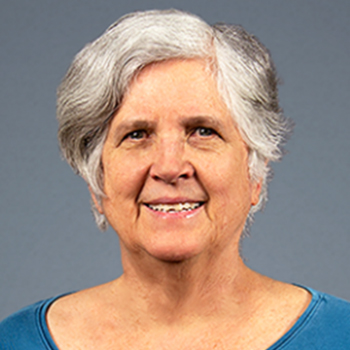Susan Bonner-Weir, PhD
-
Researcher
-
Islet Cell and Regenerative Biology
Senior Investigator and Wellness Foundation Professor
Professor of Medicine, Harvard Medical School
Dr. Susan Bonner-Weir is Senior Investigator, Joslin Diabetes Center and Professor of Medicine, Harvard Medical School. For over thirty years she has focused on the islets of Langerhans, with her current focus on generating a reliable source of new b cells. She has published over 200 peer-reviewed papers and 80 chapters, reviews and commentaries. She has served on numerous grant review panels (NIH, American Diabetes Association, JDRF, the Danish National Research Council, California Institute of Regenerative Medicine and the European Research Council) and editorial boards (Diabetes, Endocrinology, J Biological Chemistry, American Journal of Physiology, Cell Transplantation). She has been an invited speaker around the world including several named lectureships. She received the William Silen Award for Lifetime Achievement in Mentoring from Harvard Medical School (2015), the Paul Lacy Award (2016) from Midwest Islet Club and the 2016 Global Achievement Award from Joslin Diabetes Center. She was elected as a Fellow of the American Association for Advancement of Science (2013).
Over the years her research has focused on the endocrine pancreas (the islets of Langerhans) in four main areas: 1) the architecture of the islet and its implications for function; 2) the in vivo regulation of beta-cell mass; 3) the factors involved in islet growth and differentiation; 4) the beta cell across time and health. Her goal is to understand the mechanisms of pancreatic growth after birth in both rodents and humans in order to regulate generation of new beta cells and expansion of beta cells for regenerative purposes.
With a series of rodent models she and her colleagues provided the first compelling evidence that adult pancreatic beta-cell mass increases in response to a metabolic need and have shown the mechanisms of this postnatal pancreatic growth include both neogenesis and replication. Additionally they provided the first strong evidence of multipotent progenitor cells in the adult pancreatic ducts, first in transgenic mice over-expressing transforming growth factor-alpha, second in the partial pancreatectomy model, and third in cultured islet-depleted human pancreatic tissue, and more recently, lineage tracing experiments showing the ductal origin of the new islets formed after birth. This pathway of pancreatic growth after birth has important implications for understanding the mechanisms of response to injury and neoplasia of the pancreas as well as providing possible new insights into the pathogenesis of diabetes and new directions for therapy.
Current emphasis is on the following topics:
1. Defining the cells in the duct that can give rise postnatally to new islets. Their studies on the pancreatic regeneration after partial pancreatectomy in the adult rat defined two pathways of new b cell formation in postnatal life: replication of preexisting beta cells and differentiation from progenitors/stem cells (neogenesis). Focusing on the progenitors for the neogenesis, their hypothesis has been that in the adult pancreas duct cells act as progenitors, such that with replication the mature duct cell regresses to a less differentiated cell (perhaps equivalent to a embryonic pancreatic duct cell) and regains its potential to differentiate into islet, acinar or mature duct cell, and that this differentiation is directed by external signals or morphogens. They are defining the cells that are involved and the factors that are carefully orchestrated in vivo to stimulate the growth and differentiation of the beta cells. This project has entailed the use of duct specific Cre mice, surgical models of regeneration, characterization of different subpopulations of ductal cells from rodents and humans and determining their potential to differentiate into islet cells.
2. Understanding the phenotypic basis of functional heterogeneity among beta cells whether normal, immature or dysfunction due to glucose toxicity. They have been interested in the specializations that determine the beta cell phenotype. Recently they have shown that neonatal beta cells have a very different phenotype than adult beta cells and are functionally immature and that the transcription factor MafA is key to their functional maturation. Consistent with this, beta cells can be made dysfunctional by knocking down MafA. They have defined some of the physiological factors that regulate the maturation process in vivo so that we can mimic the maturation process in vitro for use with human ES/iPS derived cells. Their recent work has defined the changes due to aging of the beta cell and how these changes contribute to the risk of diabetes. One intriguing aspect is that acute insulin resistance accelerated the aging of the beta cells.
3. Understanding how the human pancreas responds to the demand for more beta cells. Applying the knowledge gained on the mechanism of growth and differentiation in the rodent pancreas, it is possible now to assess whether the same mechanisms are involved in human tissue. The pancreas from non-diabetic and long-term diabetic humans (both Type 1 and 2) are studied to answer to such questions.

